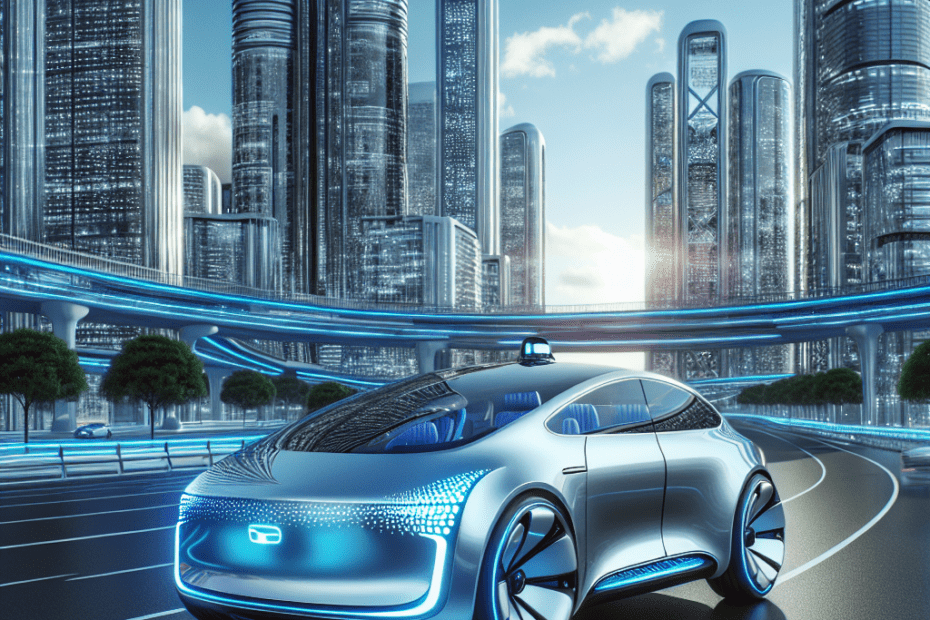“`html
Introduction
As technology continues to evolve, the world of automobiles is undergoing a radical transformation. The advent of autonomous vehicles is challenging traditional automotive design in unprecedented ways. They are pushing designers to rethink the form and function of cars as they explore cutting-edge possibilities. In the age of autonomous vehicles, form indeed follows function, but the functions are becoming ever more complex. This blog post delves into the world of autonomous car design, exploring how the shift towards self-driving technology is reshaping the automotive industry.
The New Role of Car Design
Architecture and aesthetics have traditionally dominated car design. However, with autonomous vehicles, the primary focus is shifting towards enhancing functionality and user experience. They are moving away from driver-centric design principles, making room for a passenger-focused approach. According to a study by McKinsey & Company, by 2030, it is expected that up to 15% of cars sold will be fully autonomous (McKinsey & Company).
The departure from focusing solely on the driver’s experience opens new design avenues. This means more space, comfort, and opportunities for innovation within vehicle interiors. Designers are reimagining vehicle layouts, allowing for more social and interactive arrangements.
Re-defining Exterior Design
With autonomous car design, exteriors are evolving to accommodate new technologies. Sensors, cameras, and LiDAR systems are becoming standard fixtures. These elements necessitate sleek and reimagined outer shells to enhance technological efficiency. According to data from Statista, the global market revenue for automotive external sensors is projected to reach $14.8 billion by 2027 (Statista).
| Feature | Impact on Design |
|---|---|
| Sensors and Cameras | Shifts focus from aesthetics to functionality, optimizing for sensor placements |
| LiDAR Systems | Requires specific mountings, influencing body shapes |
| Electric Powertrains | Frees up space by reducing conventional engine size and components |
Interior Innovations
The interior of autonomous vehicles is where the most significant changes are witnessed. With less need for traditional steering and control mechanisms, autonomous car design can focus on creating multi-purpose spaces. Vehicles might be outfitted with rotating seats, adjustable configurations, and infotainment systems tailored for passenger engagement. According to a report from PwC, interior setups are projected to be one of the most significant selling points for autonomous vehicles (PwC).
Safety is another crucial consideration. The lack of driver control demands that interiors provide greater protection. Enhanced seatbelts, adaptable airbags, and even materials designed to absorb impact are essential features of these future car interiors.
Sustainability and Efficiency
As autonomous car design advances, they are seeking sustainable materials and efficient systems to meet modern environmental standards. The automotive industry is increasingly incorporating recycled materials and energy-efficient designs to cut down on emissions and resource use. The International Energy Agency estimates that electric autonomous vehicles could reduce global CO2 emissions by 80 million tons annually by 2030 (International Energy Agency).
Electric powertrains are central to this transformation. By eliminating the traditional combustion engine, designers can better streamline energy use and reduce a vehicle’s carbon footprint.
Challenges and Future Outlook
Despite these exciting shifts, autonomous car design faces challenges. Legal hurdles, public skepticism, and the high cost of technology present barriers that designers and manufacturers must overcome. According to Gartner, only 3% of automotive executives expect fully autonomous vehicles to dominate the market before 2030 (Gartner).
Nevertheless, the journey towards fully autonomous vehicles continues to captivate innovators worldwide. As they refine technology and design, the automotive world looks forward to embracing a future where form indeed follows function more intricately than ever before.
Key Takeaways
- Autonomous vehicles are reshaping traditional car design by prioritizing functionality.
- Exterior designs now incorporate advanced sensors and cameras, impacting body structure.
- Interior spaces are evolving into adaptable, multi-functional environments.
- Sustainability and efficiency are integral to autonomous car design, particularly through electric powertrains.
- Challenges remain, but the industry’s innovation continues to push boundaries.
FAQ
- What is the primary design focus in autonomous vehicles?
Autonomous car design focuses mainly on functionality, enhancing user experience over traditional aesthetics. - How are exteriors changing with autonomous technology?
Exteriors must incorporate sensors and cameras, requiring sleek and functional designs that accommodate technology. - How do interiors differ from traditional cars?
Interiors feature new layouts with rotating seats and infotainment for passenger comfort, without traditional control mechanisms. - Are autonomous vehicles more sustainable?
Yes, they often use electric powertrains and sustainable materials to meet environmental and efficiency goals. - What are some challenges of autonomous car design?
Challenges include technological costs, legal barriers, and public skepticism regarding safety and reliability.
“`
